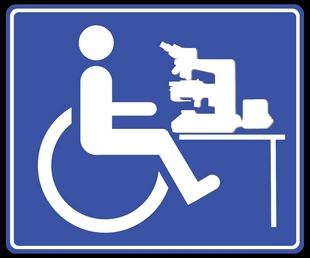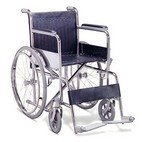 through. In other words it was a ‘two-way street’. The spinal cord carried both signals of motion but also the signals of pain and as one increased so did the other. The pain was ‘neurogenic’ and felt like burning pins and needles from the knees down. So severe that it is hard to take one’s mind off of the intense discomfort for more that a few minutes. Trying to do a task, my attention is constantly and repeatedly drawn to my painful legs and with that distraction comes the possibility and probability that errors will result in whatever I’m engaged in. As mentioned in earlier posts, this neurogenic pain is unlike conventional pain and the common analgesics (ibuprofen, acetaminophen, aspirin, percocet, etc) will not ease it. Of the four drugs that are thought to have an effect on nerve pain (Gabapentin, Lyrica, Nortryptiline and Amitryptaline) neither has any appreciable effect on me. So, with a smile and a hand on my shoulder, the doctor ushers me out his office door and tells me to learn to live with the pain.
through. In other words it was a ‘two-way street’. The spinal cord carried both signals of motion but also the signals of pain and as one increased so did the other. The pain was ‘neurogenic’ and felt like burning pins and needles from the knees down. So severe that it is hard to take one’s mind off of the intense discomfort for more that a few minutes. Trying to do a task, my attention is constantly and repeatedly drawn to my painful legs and with that distraction comes the possibility and probability that errors will result in whatever I’m engaged in. As mentioned in earlier posts, this neurogenic pain is unlike conventional pain and the common analgesics (ibuprofen, acetaminophen, aspirin, percocet, etc) will not ease it. Of the four drugs that are thought to have an effect on nerve pain (Gabapentin, Lyrica, Nortryptiline and Amitryptaline) neither has any appreciable effect on me. So, with a smile and a hand on my shoulder, the doctor ushers me out his office door and tells me to learn to live with the pain.So I try to come to terms with having to live out the rest of my life as if my legs are immersed in boiling water - severe chronic pain till the end of my days…Not a happy prospect.
I sometimes wonder how my pain compares to others with spinal cord injuries. My injury is due to bacterial growth and toxins which killed off or altered the spinal cord cells. The cord is ‘intact’ as such but damaged. Is my pain worse because damaged yet viable cells are all sending pain messages to my brain? How does that compare to someone who has had physical trauma where the spinal cord is severed to some degree. Does this person suffer less pain because there no longer is a physical connection and the pain signal is not generated or cannot get through? An analogy would be that if you cut the electrical cord going to your table lamp the light goes off. But, as if in my case the cord is still there but the many of the strands making up the cord are damaged or frayed, the light might flicker as sparks jump around the damaged area of the lamp cord. Is my spinal cord ‘sparking’ and thereby sending these intense pain signals whereas a cut spinal cord may send fewer or no signals. I just don’t know and no one has an answer for me. I cannot imagine anyone suffering worse than what I am experiencing without going mad…
Botox Injections: I was due for a follow-up Botox injection in July of 2010 however on examination the doctor did not detect any “spasticity” by their clinical definition. Over the years, my physiotherapists suggested Botox therapy to release the tension in my calf muscles and to get the heels to loosen enabling me to better stand upright on the ground. While Botox may have aided in clinical spacticity, any changes were imperceptible by my physotherapist or myself. So I left the doctor’s office without getting yet another dose of Botox and then cancelled yet another follow-up in September. I feel treatments did not translate into any noticeable effect on my walking which was what I was anticipating.
On the positive side;
1.) Changes continue to occur even this late post injury though probably not through neurological changes. While I don’t get out to use the walker much, nor am I receiving any continuing physiotherapy, strength and stability continue to improve. It seems as if no matter how hard you try (physiotherapy, exercise etc.) muscles have to come back in a sequence and until some become stronger and more efficient, the other related muscles will not function to their full potential. In recent months the hamstring muscles (back of upper thigh) have increased in size and strength offering better stability when standing. Hamstring muscles refer to three muscles located on the back of the upper thigh;
- Semimebranous
- Semitendinosus
- Biceps Femoris
There has been some improvement in the dorsi-flection motion (lifting my foot upwards at the ankle). I believe this improvement is not neurologic but rather attributable to my repeated standing and stretching. The achillies tendons have stretched out to some degree and therefore permit what muscle strength I have to lift my foot up. The signal to lift had returned but the tendons had shortened and tightened to where they wouldn’t permit the motion. Plantar-flection (rotating the foot downwards at the ankle -ie. ‘standing on the balls of you feet’ had come back quickly some time ago.
2.) For my Dad’s 87th birthday, I went to visit him in my childhood home. My first time back post injury - some five years. A bit of a challenge using the walker on an uneven gravel driveway to then navigate narrow pathway tiles and a few steps up into the house. I made it and my record of never having fallen while on two feet, post paralysis, remains intact.
3.) It has also been one year and three months since I returned to work. I have never missed a day in all that time. The lab in which I work has moved into new facilities which are much more spacious and easy to navigate. So much better to have a regular paycheque coming in that one can actually live on and not the paltry payments provided by disability pay.
So, to sum up - the neurogenic leg pain continues unabated and no medication can relieve the intense discomfort. The muscle strength and coordination continues to improve, somewhat sequentially. The sciatic nerve pain, although I continue to have some bad days, may have lessened some. This may be due to the back and butt muscle strengthening and pulling the ‘pelvic girdle’ somewhat back into place. Leg spasms still occur but are fewer and less severe than previously experienced. Tone or tightness around the chest remains bit it too may be somewhat less than previous noted. The brain is still sending a signal to these muscles telling them to tighten and to stay that way.
I left the hospital in the fall of 2006 with no prospect of hope yet today I can walk with an aluminum frame walker and continue to improve almost weekly.
If only the pain would subside!!!!!!…..







.jpg)


